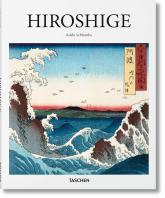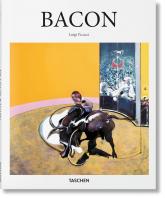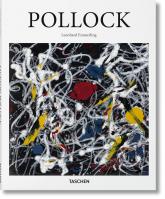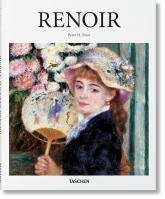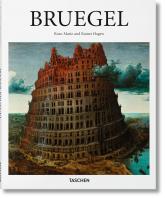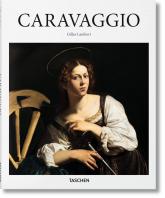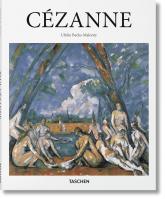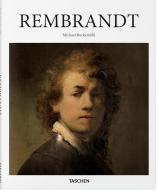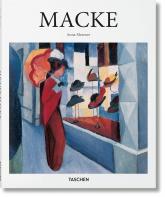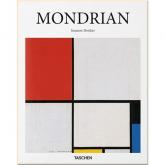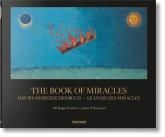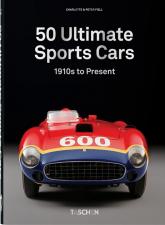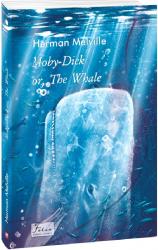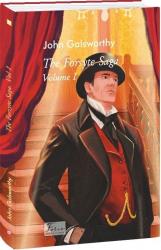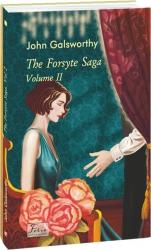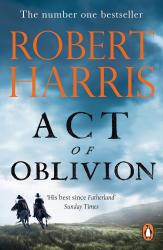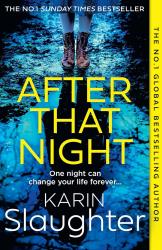Sb from 10:00 to 18:00
Foreign Literature
Found 521 goods
Utagawa Hiroshige (1797–1858) was one of the last great artists in the ukiyo-e tradition. Literally meaning “pictures of the floating world,” ukiyo-e was a particular woodblock print genre of art that flourished between the 17th and 19th centuries. Subjects ranged from the bright lights and a...
Largely self-taught as an artist, Francis Bacon (1909–1992) developed a unique ability to transform interior and unconscious impulses into figurative forms and intensely claustrophobic compositions. Emerging into notoriety in the period following World War II, Bacon took the human body as hi...
The rebel hero of Abstract Expressionism, Jackson Pollock (1912–1956) careened through his life like a firework across the American art landscape. Channeling ideas from sources as diverse as Picasso and Mexican surrealism, he rejected convention to develop his own way of seeing, interpreting,...
One of the leading lights of the Impressionist movement, Pierre-Auguste Renoir (1841–1919) remains a towering figure in art history with enduring public appeal. Sun-kissed, charming, and sensual, his work shows painting at its most lighthearted and luminous, while championing the plein air an...
The great Flemish painter Pieter Bruegel the Elder (c. 1526/31–1569) was an astoundingly inventive painter and draftsman, who made his art historical mark with beautiful, evocative landscapes as well as religious subjects, both notable for their vernacular language and attention to everyday, ...
Michelangelo Merisi da Caravaggio (1571–1610) was always a name to be reckoned with. Notorious bad boy of the Italian Baroque, the artist was at once celebrated and controversial, violent in temper, precise in technique, a creative master, and a man on the run. Though famed for his dramatic ...
In the latter half of the 19th century, in the verdant countryside near Aix-en-Provence, Paul Cezanne (1839–1906), busily plied his brush to landscapes and still lifes that would become anchors of modern art. With compact, intense dabs of paint and bold new approaches to light and space, he m...
embrandt van Rijn (1606–1669) never left his homeland of the Netherlands but in his massive body of painting, drawing, and etching, he changed the course of Western art. His prolific oeuvre encompasses religious, historical, and secular scenes, as well as one of the most extraordinary series ...
August Macke (1887–1914) quickly ascended to notoriety, only to be killed at the tender age of 27 at the start of World War I. Despite his brief career, the artist left a remarkable oeuvre in his wake, his obsessions with color reflecting aspects of Impressionism, Post-Impressionism, Fauvism,...
A key figure in the international avant-garde, Piet Mondrian (1872–1944) was at once an extraordinary painter and leading art theoretician whose influence resonates to this day. Coining the term “Neo-plasticism”, he pursued a style of painting composed only of primary colors against a grid of...
Before becoming the critically acclaimed filmmaker responsible for such iconic films as Dr. Strangelove and The Shining, Stanley Kubrick spent five years as a photographer for Look magazine. The Bronx native joined the staff in 1945, when he was only 17 years old, and shot humanist slice-of-l...
The Book of Miracles first surfaced only a few years ago and is one of the most spectacular discoveries in the field of Renaissance art. The near-complete illustrated manuscript, created in Augsburg around 1550, is composed of 169 pages of large-format illustrations in gouache and watercolor,...
Originally published in France between 1876 and 1888, Auguste Racinet?s Le Costume historique was in its day the most wide-ranging and incisive study of clothing ever attempted. Covering the world history of costume, dress, and style from antiquity through to the end of the 19th century, the ...
For more than half a century, Annie Leibovitz has been taking culture-defining photographs. Her portraits of politicians, performers, athletes, businesspeople, and royalty make up a gallery of our time, imprinted on our collective consciousness by both the singularity of their subjects and Le...
"Швидкість життя: Історії за 50 найсенсаційніших спортивних автомобілів у світі" Для досвідчених колекціонерів автомобілів або захоплених новачків, цей том - втілення антології спортивних автомобілів. Об'єднавши 50 найвишуканіших, бажаних та адреналіну-заряжених спортивних автомобілів усіх ч...
Moby-Dick or, the Whale (1851) is a novel by the American writer Herman Melville (1819–1891). It is the story of the sailor Ishmael about the obsessive pursuit of Ahab, the captain of the whaling ship Pequod, after a white sperm whale. The dramatic conflict between man and nature has captivat...
The Forsyte Saga brought the English writer John Galsworthy (1867–1933) the Nobel Prize in Literature (1932). The Forsytes are the ten children of Dossett Forsyte, typical bourgeois of the Victorian era. Dossett made a considerable fortune building houses in London, and left his descendants h...
The Forsyte Saga brought the English writer John Galsworthy (1867–1933) world fame and the Nobel Prize in Literature. In the pragmatic world of the Forsytes, neither romantic passions nor full-blooded feelings are recognized. The Forsytes are respectable bourgeois whose lives are completely s...
A SUNDAY TIMES BEST PAPERBACK OF THE YEAR 2023 'A belter of a thriller' THE TIMES 'A master storyteller . . . an important book for our particular historical moment' OBSERVER 'His best since Fatherland' SUNDAY TIMES 'From what is it they flee?' He took a while to reply. By the time he spoke...
Watch Will Trent on Disney+! Sara doesn’t think about that night. About the attack. About the way it tore her world apart. About the man who did it, now safely behind bars. She thought that night was over. Until a new victim appears… And now a young woman’s life depends on Sara uncoveri...









